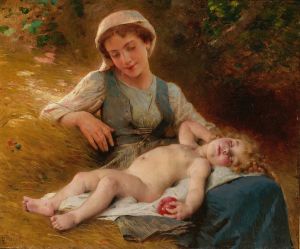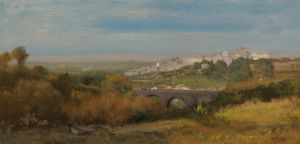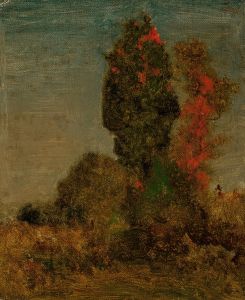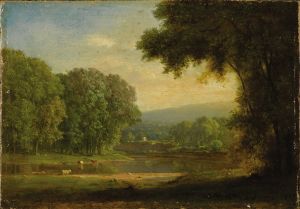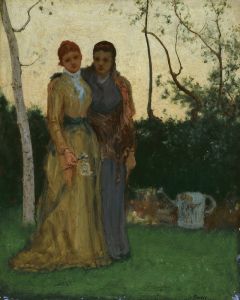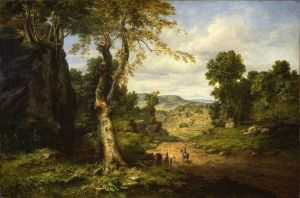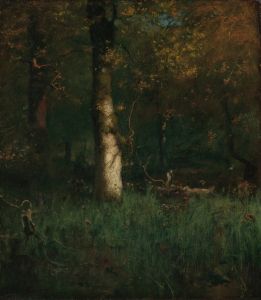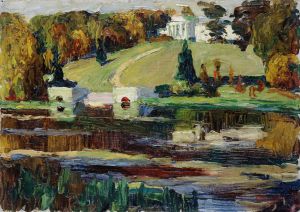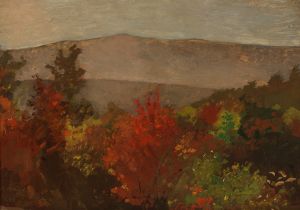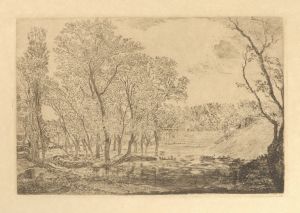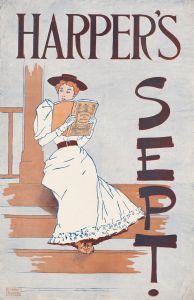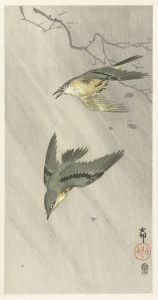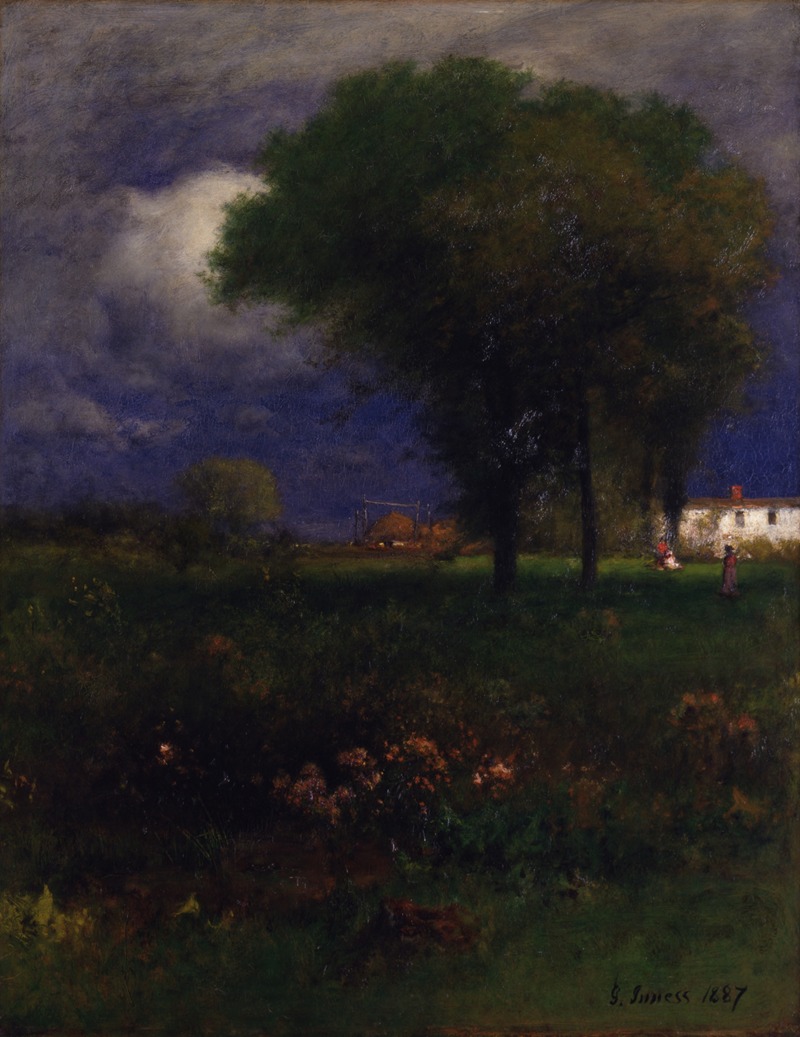
September Afternoon
A hand-painted replica of George Inness’s masterpiece September Afternoon, meticulously crafted by professional artists to capture the true essence of the original. Each piece is created with museum-quality canvas and rare mineral pigments, carefully painted by experienced artists with delicate brushstrokes and rich, layered colors to perfectly recreate the texture of the original artwork. Unlike machine-printed reproductions, this hand-painted version brings the painting to life, infused with the artist’s emotions and skill in every stroke. Whether for personal collection or home decoration, it instantly elevates the artistic atmosphere of any space.
George Inness was a prominent American landscape painter, known for his unique style that blended elements of the Hudson River School with influences from the Barbizon School of France. His painting "September Afternoon" is a notable example of his mature work, showcasing his ability to capture the subtleties of light and atmosphere in the landscape.
"September Afternoon" was created during a period when Inness had fully developed his distinctive approach to landscape painting. By this time, he had moved away from the detailed, realistic depictions characteristic of the Hudson River School, embracing a more expressive and atmospheric style. This painting reflects his interest in conveying mood and emotion through the landscape, rather than focusing solely on topographical accuracy.
The painting depicts a serene rural scene, likely inspired by the countryside around Montclair, New Jersey, where Inness lived during the latter part of his life. Inness was known for his ability to evoke a sense of tranquility and harmony in his landscapes, and "September Afternoon" is no exception. The composition is balanced and harmonious, with a gentle interplay of light and shadow that captures the essence of a late summer day.
Inness was deeply influenced by the philosophical and spiritual ideas of Emanuel Swedenborg, a Swedish theologian whose writings emphasized the connection between the natural and spiritual worlds. This influence is evident in "September Afternoon," where Inness uses the landscape as a means to explore deeper spiritual themes. The soft, diffused light and the subtle gradations of color in the painting suggest a sense of the divine presence in nature, a hallmark of Inness's work.
The painting is characterized by its loose brushwork and the use of a muted color palette, which contribute to its overall sense of calm and introspection. Inness often employed a technique known as "tonalism," which involved the use of closely related colors to create a harmonious and unified composition. This approach is evident in "September Afternoon," where the warm earth tones and soft greens blend seamlessly to create a cohesive and inviting scene.
"September Afternoon" is an excellent example of Inness's mature style, which was marked by a shift towards more personal and introspective themes. His work during this period was less concerned with the grand, dramatic vistas favored by earlier landscape painters and more focused on capturing the intimate and transient moments of nature. This painting, with its emphasis on mood and atmosphere, exemplifies Inness's belief in the power of art to convey spiritual truths and emotional depth.
Today, George Inness is regarded as one of the most important American landscape painters of the 19th century, and "September Afternoon" remains a testament to his skill and vision. The painting is held in high esteem for its ability to evoke a sense of peace and contemplation, qualities that continue to resonate with viewers. Through works like "September Afternoon," Inness has left a lasting legacy, influencing generations of artists and contributing to the development of American landscape painting.





